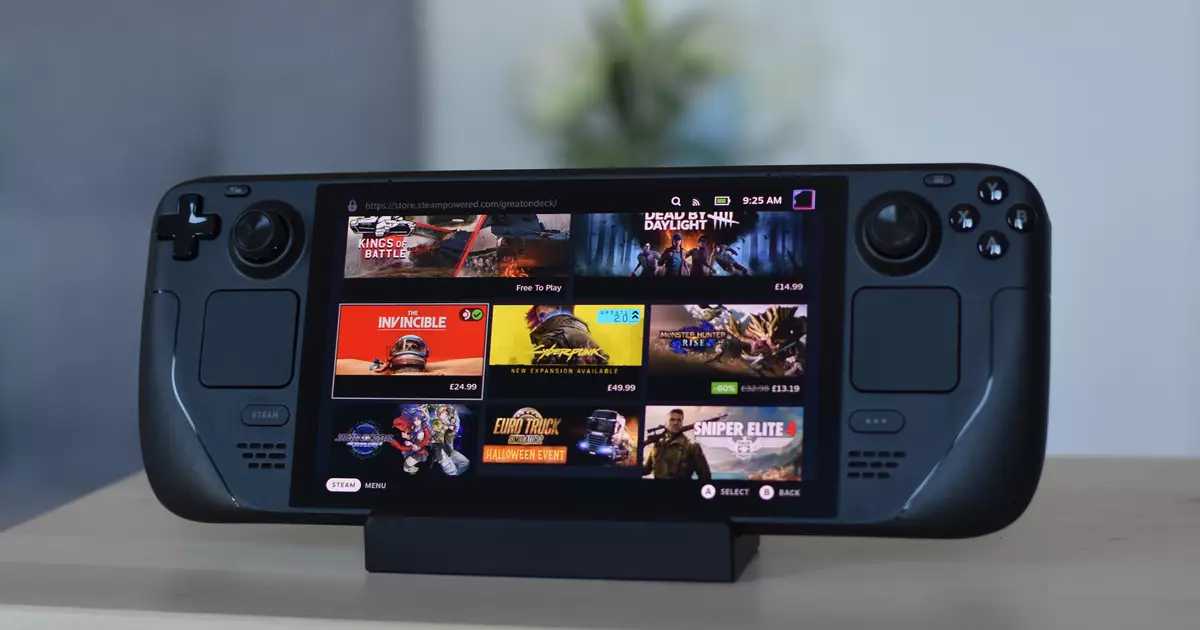As Valve Corporation continues to innovate in the gaming sector, it appears that the company is once again exploring the realms of hardware development. Recent reports suggest that Valve is contemplating a significant shift from the traditional x86 architecture that has dominated PC gaming in favor of ARM architecture — a decision that could open up new possibilities for performance, efficiency, and a broader library of game compatibility.
Leaked information from SteamDB reveals a new application tagged ‘ValveTestApp3043620’, which hints at Valve’s earnest exploration of ARM-based processors. This app connects to a myriad of popular PC games, including titles like *Left 4 Dead 2*, *Among Us*, and *Hollow Knight*, and showcases tags associated with ARM compatibility. The presence of the ‘proton-arm64ec’ label signals a potential evolution of Proton, Valve’s crucial compatibility layer enabling Windows games to run smoothly on their Linux-based SteamOS.
The wider implications of going ARM could indeed signal a new era for Valve’s hardware initiatives. Thanks to ARM’s established framework in mobile devices, software, and smartphones — like the Nintendo Switch and modern Macs — adopting this architecture would mark a pivotal divergence in Valve’s hardware strategy, and not just a mere iteration.
Pros and Cons of ARM for Valve
Switching to ARM architecture brings a host of benefits along with pertinent challenges. One major advantage that can’t be overlooked is the inherent power efficiency of ARM chips compared to their x86 counterparts. This efficiency could serve as a backbone for extended battery life in portable devices like the Steam Deck or even in exciting ventures like a new wireless VR headset. Furthermore, ARM devices typically have greater compatibility with Android, potentially broadening the scope of games available to users, thus integrating mobile gaming into the Steam ecosystem.
However, challenges abound. The crux of the issue lies in performance and compatibility. While many modern ARM chips can stand toe-to-toe with x86 in terms of raw power, the existing gaming environment is heavily skewed towards the latter due to decades of optimization and development. Consequently, maintaining the expected performance and user experience might necessitate extensive emulation efforts, which historically leads to compromised frame rates and responsiveness — qualities that gamers value highly.
Valve is known for its diligent approach to compatibility issues through Proton, and while the framework has been effective so far, transitioning games designed for x86 architecture to ARM presents a daunting task. The gaming experience could suffer in scenarios where emulation is not up to par, leading to potential dissatisfaction among users.
The speculation surrounding Valve’s prospective ARM hardware is not just a theoretical exercise; it reflects a tangible desire for innovation and adaptability. Many argue that Valve has substantial investments in hardware, dating back over a decade with the introduction of Steam Machines. The company certainly has not shown any signs of withdrawing from the hardware landscape, instead opting for strategic evolution.
While some analysts predict that we might see a new iteration of the Steam Deck powered by ARM, it seems more plausible that other ventures, like a dedicated standalone VR headset, could be on the horizon. The efficiency gains from ARM architecture are appealing, and incorporating them into a portable VR device would align well with the current trends in gaming technologies.
Nonetheless, Valve has communicated a timeline suggesting that any next-gen Steam Deck is still years away. This means that while their exploration of ARM technology is intriguing, it may take time before any concrete products come to fruition. The gaming community remains eager, but it also must temper expectations as Valve wanders into this new territory.
Valve’s exploration of ARM architecture represents not just an opportunity for advancement but also a complex challenge that could reshape gaming hardware as we know it. As the line between traditional PC gaming and mobile ecosystems blurs, Valve stands at a crossroads, presenting them with the chance to remain a staple in the gaming industry. While the path forward is laden with uncertainties and challenges, it’s undeniably an exciting prospect for gamers and developers alike as they watch how Valve navigates this potential shift.


Leave a Reply